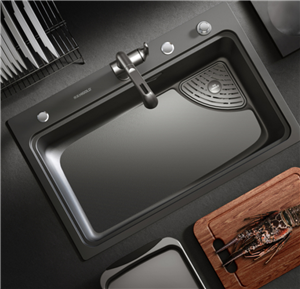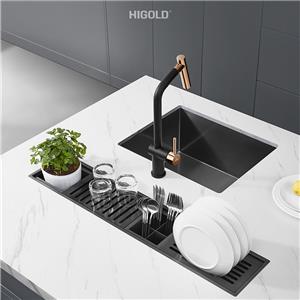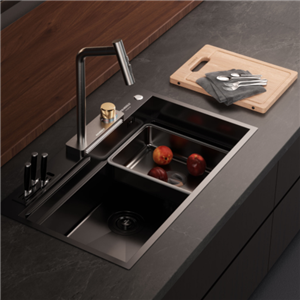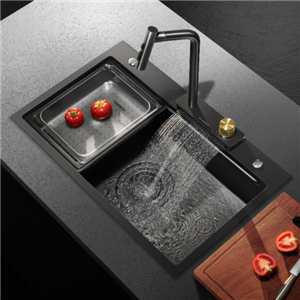Which type of kitchen sink is the most popular?
As an important part of home decoration, the kitchen sink is responsible for basic functions such as washing food, cleaning dishes, and draining. With the improvement of people's quality of life and the diversification of kitchen decoration styles, consumers' demand for kitchen sinks has also shown a diversified trend. From functional requirements to appearance design, from material selection to installation methods, a variety of kitchen sink types are available on the market. These sink types are not only different in function, but also have their own characteristics in appearance, durability, and cleaning convenience. Because of this, choosing the most suitable sink type has become the focus of consumers.
So, which type of kitchen sink is the most popular? This article will start from the different types of kitchen sinks, combine market trends, consumer needs and practical applications, and deeply analyze the characteristics and popularity of different sink types, and provide consumers with useful reference.
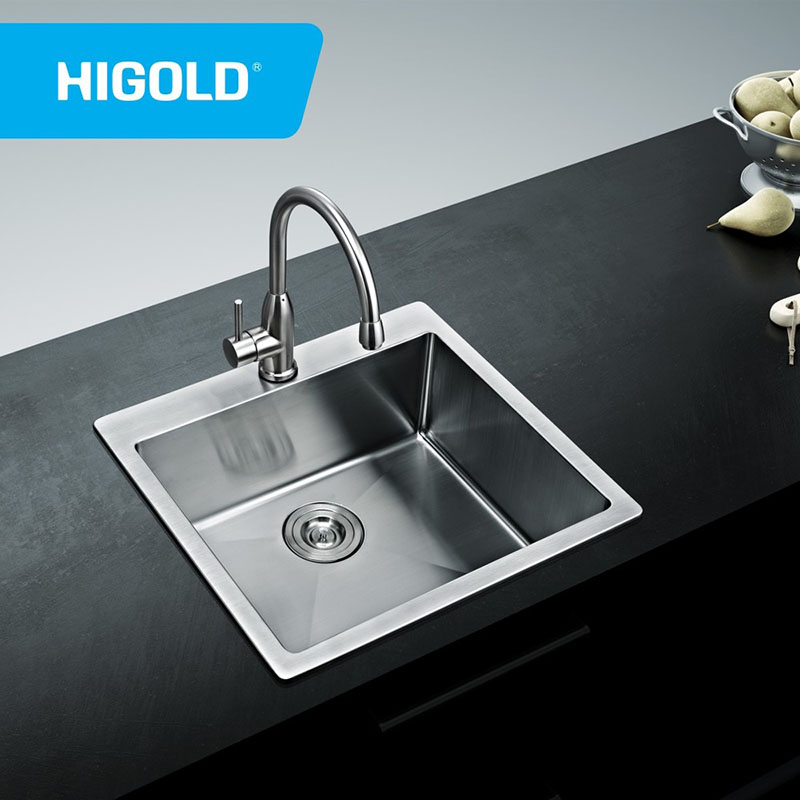
What are the types of kitchen sinks?
The types of kitchen sinks can be classified according to different standards. The most common classification method is to distinguish them according to installation methods and materials. Through these two standards, we can see several mainstream types of kitchen sinks on the market, including topmount kitchen sink, undermount kitchen sink, freestanding sink, and sinks of different materials such as stainless steel, quartz, ceramic sinks, etc.
1. topmount kitchen sink
Topmount kitchen sink is a very popular type of sink on the market. The main feature of topmount kitchen sink is that the edge of the sink is exposed, the upper edge of the sink is directly flush with the countertop, and the junction between the sink and the countertop is fixed by fasteners such as screws. Topmount kitchen sink is easy to install and has a simple and modern appearance, so it has become the first choice for many modern families.
Advantages of topmount kitchen sink:
● Easy installation: topmount kitchen sink is very simple to install, and does not require complicated cutting work. You only need to cut a hole on the countertop that fits the size of the sink and fix the sink.
● Easy to clean: Since the edge of the topmount kitchen sink is exposed, there is no complicated joint between the sink and the countertop, which reduces the accumulation of stains and scale, and is relatively easy to clean.
● Strong aesthetics: The exposed edge design of the topmount kitchen sink can enhance the modern feel of the kitchen, making it look more concise and stylish.
Disadvantages of topmount kitchen sink:
● Water easily accumulates on the edge of the sink: The edge of the topmount kitchen sink is protruding, which can easily lead to poor water flow during use, and water stains and oil stains may accumulate on the edge, affecting the appearance.
● The countertop may wear out: The exposed part of the edge of the topmount kitchen sink may rub against the countertop, causing partial wear of the countertop.
2. Undermount kitchen sink
The design of an undermount kitchen sink is the opposite of a topmount kitchen sink. An undermount kitchen sink is installed under the countertop, and the edge of the sink is completely hidden within the countertop. The advantage of an undermount kitchen sink is that it has a simple appearance, and there is no gap between the countertop and the sink, making the countertop cleaner and tidier.
Advantages of undermount kitchen sink:
● Seamless design: The design of the undermount kitchen sink is simpler, and the edge of the sink is completely hidden under the countertop. There is no gap between the countertop and the sink, which avoids the accumulation of water stains and oil stains, making it easier to clean.
● Increased countertop space: Since the undermount kitchen sink is installed under the countertop, there is no sink protruding from the countertop, so users can prepare and clean food more conveniently.
● Strong durability: Undermount kitchen sinks are usually more durable than topmount kitchen sinks, especially when the sink is seamlessly integrated with the countertop, which can reduce the impact of water flow and weight on the sink.
Disadvantages of undermount kitchen sinks:
● Complex installation: Undermount kitchen sinks require more precise cutting of the countertop and fixing the sink under the countertop, which requires more precise operation during the installation process, so it is more complicated to install than topmount kitchen sinks.
● Difficult to repair: If the undermount kitchen sink is damaged or scratched, the countertop may need to be removed for repair, and the repair process is more troublesome.
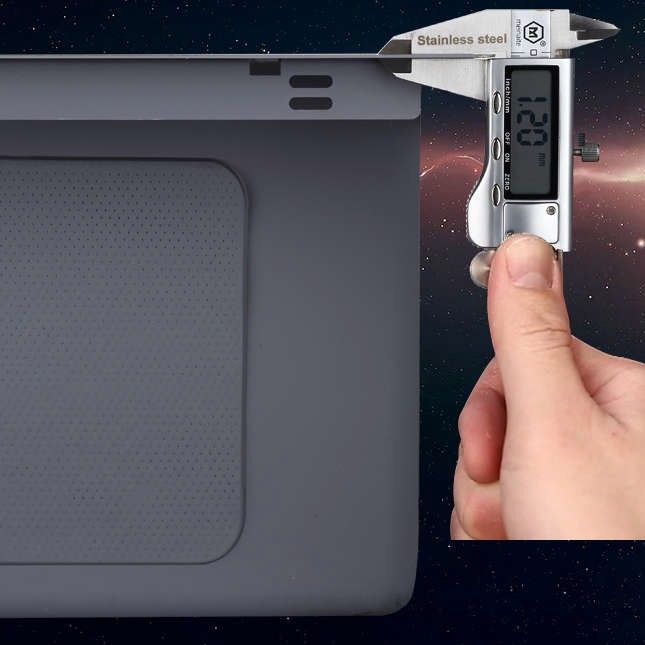
3. Freestanding sinks
Freestanding sinks are a sink design that is independent of the countertop and is usually placed in the center or one side of the kitchen. It looks more like a large basin and is usually made of stainless steel, quartz, ceramic and other materials. It is suitable for some families with open kitchen designs. Freestanding sinks not only have the basic functions of traditional sinks, but also are a unique highlight in kitchen design.
Advantages of freestanding sinks:
● Large capacity: Freestanding sinks are usually spacious and can accommodate more items, suitable for families who need to wash a large number of dishes or ingredients.
● Open design: This type of sink is separated from the kitchen countertop, making the kitchen layout more flexible and providing users with more operating space.
● Easy to maintain: Due to the simple structure of the freestanding sink, it is also easier to maintain.
Disadvantages of freestanding sinks:
● Large space occupation: Freestanding sinks usually require a large space and are suitable for kitchens with larger areas. If the kitchen space is small, this type of sink may appear bulky.
● Complex installation: Compared with countertop and undermount kitchen sinks, freestanding sinks are relatively complex to install and require additional brackets or independent support structures to fix the sink.
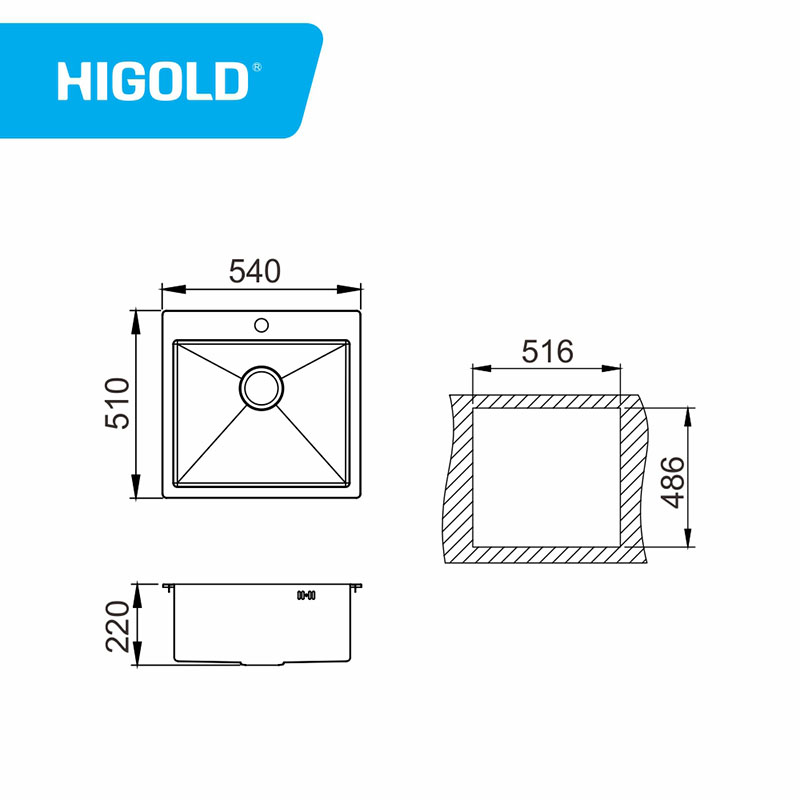
How to choose the material of the kitchen sink?
In addition to the installation method of the sink, the choice of material is also an important factor affecting the popularity of the sink. Sinks made of different materials have obvious differences in durability, cleanability, appearance, price, etc. Therefore, when consumers choose a sink, they often decide which material to use based on their needs and budget.
1. Stainless steel sink
Stainless steel sinks are the most common type of sink on the market. Their main advantages are durability, corrosion resistance, strong stain resistance, and relatively affordable price. Stainless steel sinks have a simple appearance and can adapt to various kitchen styles, so they are favored by consumers.
Advantages of stainless steel sinks:
● Durability: Stainless steel sinks are corrosion-resistant and wear-resistant, suitable for long-term use.
● Easy to clean: The surface of stainless steel sinks is smooth, not easy to adhere to stains and scale, and very convenient to clean.
● Economical: Compared with sinks made of other materials, stainless steel sinks are more affordable and suitable for consumers with limited budgets.
Disadvantages of stainless steel sinks:
● Noise: Stainless steel sinks may make a lot of noise when in use, especially when the water flow impacts, which may make the kitchen seem noisy.
● Easy to scratch: Although stainless steel sinks are durable, they are still prone to scratches when in contact with hard objects.
2. Quartz sinks
Quartz sinks have become an increasingly popular choice for kitchen sinks in recent years due to their beauty, durability and strong stain resistance. Quartz sinks are usually made of quartz powder combined with resin, which has high hardness and scratch resistance.
Advantages of quartz sinks:
● Strong stain resistance: The surface of quartz sinks is relatively dense and not easy to absorb oil and water stains, so it is easier to clean.
● High temperature resistance and scratch resistance: Quartz sinks have high hardness, are not easy to scratch, and can withstand a certain high temperature.
Disadvantages of quartz sinks:
● High price: Quartz sinks are usually expensive and are not suitable for consumers with limited budgets.
● Fragility: Quartz sinks may break or crack when impacted by heavy objects.
3. Ceramic sinks
Ceramic sinks have very high aesthetics, especially for consumers who pay attention to the appearance and details of the kitchen. The surface of the ceramic sink is smooth and easy to clean, and it has high heat resistance and corrosion resistance.
Advantages of ceramic sinks:
● Beautiful appearance: Ceramic sinks usually have a smooth, white surface, adding elegance and high-end feeling to the kitchen.
● High temperature resistance and corrosion resistance: Ceramic sinks are resistant to high temperatures, not easily deformed by heat, and have strong corrosion resistance.
Disadvantages of ceramic sinks:
● Easily broken: Ceramic sinks are relatively fragile and easily broken or damaged by impact.
● Heavier: Ceramic sinks are relatively heavy, and the impact of their weight on the countertop structure needs to be considered during installation.
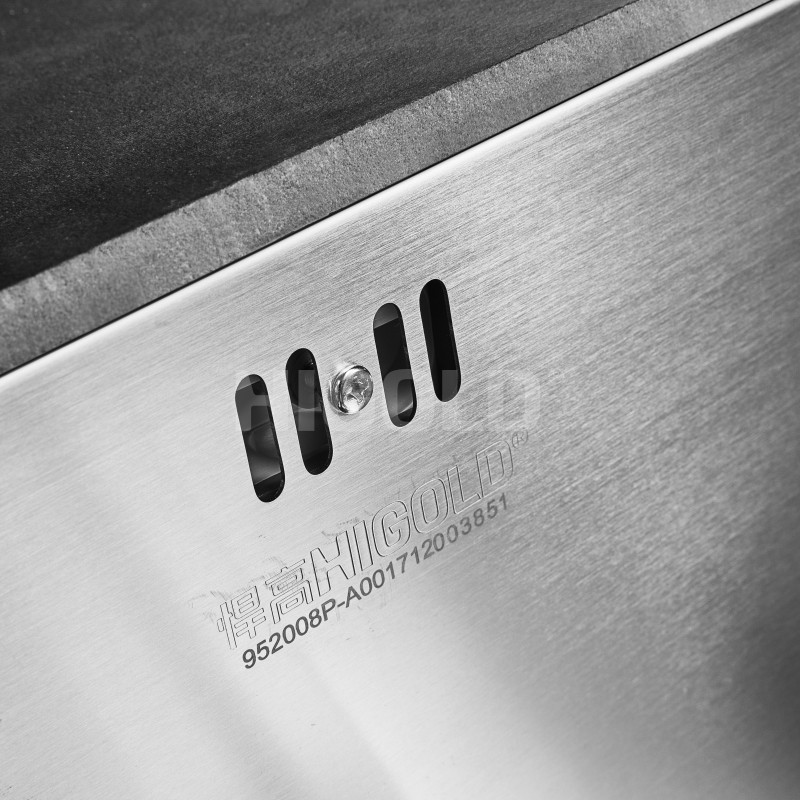
Wholesale Kitchen Sinks and Faucets from Higold
Looking for high-quality undermount kitchen sinks and faucets? Higold Group is a leading manufacturer in China, offering competitive wholesale prices and top-tier products. Our sinks are crafted from SUS304 stainless steel and come with various certifications for quality assurance. With a production capacity exceeding 50,000 units per month, we can meet the demands of large-scale projects. Get in touch for bulk orders and special pricing!

